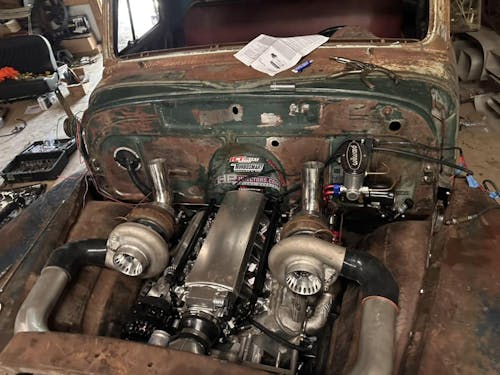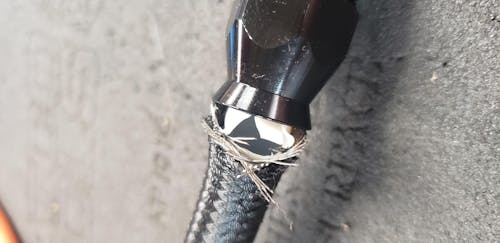Understanding the Benefits of an Oil Catch Can: A Comprehensive Guide
An oil catch can is a simple yet essential upgrade for maintaining engine performance and longevity. By trapping harmful oil vapors and contaminants, it prevents carbon build-up and ensures cleaner air circulation within the engine. In this guide, we’ll explore everything you need to know about oil catch cans and why they are a must-have upgrade for your vehicle.
What is an Oil Catch Can and How Does It Work?
An oil catch can is a crucial component of a vehicle's crankcase ventilation system, designed to capture oil vapors and contaminants before they re-enter the intake system. This process ensures that only clean air circulates in the engine, helping maintain its efficiency and performance. By preventing harmful residues from accumulating, it significantly reduces the risk of build-up on critical engine components like intake valves.
Key Advantages of Installing an Oil Catch Can
Installing an oil catch can provides numerous benefits for both engine performance and overall vehicle efficiency. Here are the key advantages:
-
Reducing Carbon Build-Up and Extending Engine Life
An oil catch can traps oil vapors, preventing them from depositing on engine parts such as intake valves. This helps reduce carbon build-up, prolonging engine life and ensuring consistent performance over time. -
Improving Fuel Efficiency and Reducing Emissions
Cleaner engine components promote better combustion efficiency, leading to improved fuel economy. Additionally, by reducing emissions, oil catch cans contribute to environmentally sustainable vehicle operation while optimizing performance.
Maximizing Engine Performance: Stock vs. High-Performance Vehicles
Properly utilizing an oil catch can can greatly enhance engine performance, regardless of the type of vehicle. Here’s how it benefits both stock and high-performance engines:
Benefits in Stock Vehicles
- Stock vehicles, especially those equipped with direct injection engines, often face carbon build-up due to oil vapors entering the intake system.
- Installing an oil catch can reduces maintenance requirements by keeping the intake system clean, ensuring consistent engine performance, improved fuel efficiency, and extended engine longevity.
Role in High-Performance and Modified Vehicles
-
High-performance and modified vehicles experience higher stress and engine demands, making them more prone to residue build-up.
-
Oil catch cans play a critical role in these scenarios by preventing contaminants from clogging critical engine components. This maintains peak efficiency, reduces wear and tear, and minimizes the risk of performance issues.
By addressing the specific needs of both stock and high-performance vehicles, oil catch cans serve as an effective solution to preserve engine health and optimize long-term performance.
Installation and Maintenance of Oil Catch Cans
Proper installation and regular maintenance of an oil catch can are essential for ensuring its effectiveness and longevity. Here’s what you need to know:
Steps to Proper Installation
-
Position the oil catch can between the PCV valve and the intake manifold.
-
This setup ensures that oil vapors and contaminants are effectively trapped before they can re-enter the intake system.
-
Use appropriate fittings and secure connections to avoid leaks or inefficiencies during operation.
Maintenance Tips and Best Practices
-
Regularly drain the oil catch can to remove accumulated oil and debris.
-
Clean the interior components periodically to prevent clogs that may reduce its effectiveness.
-
Monitor the catch can’s performance during routine vehicle maintenance to ensure optimal functionality.
By following these steps, you can maximize the benefits of your oil catch can and maintain your engine’s health and efficiency.
Considerations for Choosing the Right Oil Catch Can
When selecting an oil catch can, it's important to evaluate several factors to ensure optimal performance and long-term reliability. The following considerations will help guide your decision:
-
Types and Features:There are various designs of oil catch cans, ranging from basic models to advanced filtration systems. Choose one that matches your engine’s requirements and driving conditions to achieve the best results.
-
Compatibility with Various Engine Types:Whether your vehicle has a diesel, turbocharged, or high-performance engine, it is essential to select an oil catch can that is specifically designed for compatibility with your engine type. This ensures effective operation and reduces potential issues.
-
Regulatory Compliance:Ensure the oil catch can complies with environmental standards and legal regulations in your region. Adhering to these requirements avoids potential legal problems and supports environmentally responsible practices.
Conclusion
An oil catch can is an invaluable investment for maintaining engine health. It reduces carbon build-up, improves fuel efficiency, and extends engine life. By ensuring clean air circulation in the engine, it supports consistent performance while lowering maintenance costs. Whether you drive a stock vehicle or a high-performance car, incorporating an oil catch can into your vehicle's system can result in long-term benefits, both for your engine and the environment.
Regular maintenance and proper selection of an oil catch can tailored to your vehicle’s needs will help maximize its effectiveness, ensuring a cleaner, more efficient, and longer-lasting engine.


![EVIL ENERGY 4/6/8/10AN PTFE Fuel Line Kit | E85 Nylon Braided Hose | 16/20FT Black Black with Comprehensive Fittings [20FT]](http://www.ievilenergy.com/cdn/shop/files/Test-2025-Evilenergy-125598065_165x.png?v=1742144807)
![ptfe hose fitting kit [16FT]](http://www.ievilenergy.com/cdn/shop/files/Test-2025-Evilenergy-125598171_165x.png?v=1742144807)
![CPE Fuel Line[25FT]](http://www.ievilenergy.com/cdn/shop/files/25FTCPE_FuelLine_165x.png?v=1735220649)
![CPE Fuel Line[20FT]](http://www.ievilenergy.com/cdn/shop/files/20FTCPE_FuelLine_165x.png?v=1735220649)















